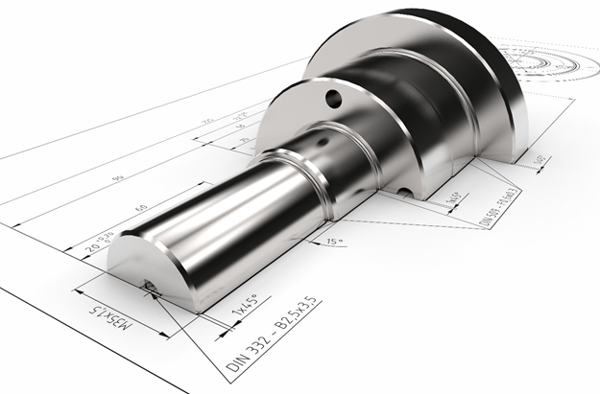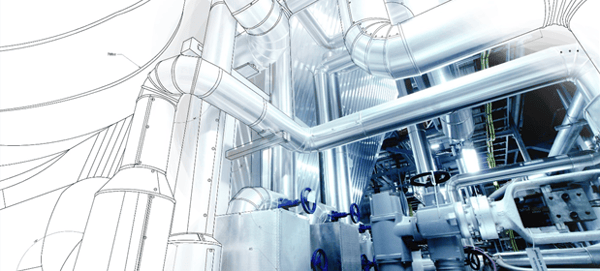First comes the idea.
A wonderful spark of ingenuity springs from the depths of our conscience and rushes through the thalamus to reach the back of our eyes and push them forward into the open space of our sight, while the throat delights to the triumphant horn of “Eureka!”.

We smile, and we laugh. We jump up and down, looking for a piece of reality to imprint with such marvelous thoughts. Sheets of paper are splashed with ink, keyboards rattle to the march of diligent fingers, screens are filled with color, notes, numbers and drawings. The world caves in to our determinate blow of genius.
The world registers our joyful discovery, but the world moves on regardless, and so do we. There are meals to be cooked, reports to be written, errands to be done, forms to be filed. We have families, jobs, friends, pets; they all need our care and attention. The rambling noise of everyday life gets in the way, and what once was a loud outcry of innovation soon becomes muted.
A whisper remains, roaming around the stations of our train of thought, like a fortuitous millionaire that, worn down by the pleasures and vicissitudes of life, has now lost all its fortune and become homeless. It was once the most venerated individual in this society of thoughts; now it lies in a corner, neglected, while more industrious and well-founded characters pass by, too busy with a pressing reality to stop and help it get back on its feet.
Our idea yells at times, drunk with abandonment and enraged at our forgotten promises. It interrupts the transit of those practical thoughts, calling shame upon their lack of authenticity, their boring and constrained existence. We oftentimes ignore it; we dismiss it as a naïve attempt to survive in a pragmatic world by sheer ideals and depositions.
Some days, however, some rare days, led by fate and pressed by circumstance, our heart charges against the torments of a gray life, a life that sometimes comes to own us more than we own it. We run, like children at the sight of a bird laying on the ground, to our homeless invention. With renewed hope, driven more by blissful curiosity and longing for honor than by pure mercy, we pick up our idea, we reaffirm our promises and we commit to the effort of giving it a room in the inner chambers of our mental palace.
We feed our idea, we grow it, we caress it and perfect it. We dress it in beautiful colors and show it around. We fall in love with our idea. We want the best of the world to serve it, and we will not rest until we can proudly look down from the ample hills of challenge, hand in hand with our creation, to the crowds gathered to contemplate the miracles taking place on this, our land.
We dream to settle upon the mountain, but we must climb it first. This is no easy task. There are many rooms in a palace, and only a few hours in a day. Do we sacrifice our hours by the fire in our living room to visit our invention in the basement? Do we make that old exercise space into a renovated gym, or do we set up a study? Do we read, or do we watch a show? Do we do research, or do we sleep? Do we struggle, or do we settle?
And there are so many other homeless ideas at our stations. Is this one really the most promising? Is this one worth the privilege of our palace or are we neglecting a prince in disguise while serving a hopeless adventurer? Do we really have the resources to give life to such delicate entity? Is it worth the effort?

Doubt surrounds us, but our heart pumps ambition and our lungs breathe the fresh scent of confidence. We put thoughts into action and we lead our way down the less traveled road, towards the uncertain horizon of a promised paradise. We wrestle against desperation and we come out victorious.
Today’s world, the world of the engineer and the inventor, tenders us a disparity of tools, some useful, others more distracting, to help us along our strenuous journey. From the deep waters of the internet, where we dive in search of hidden treasures, to the marvelous and ever-growing power of electronics, which have become our strongest allies in the design of a better world, we work hard to make that homeless idea into an artful and promising prospect.
We sit down, dust off our CAD skills, and turn on our computers. One hand grasping the mouse and the other ready to punch in some numbers, we start the design process. We have done all the preliminary research. We have strengthened our idea. The ravenous homeless castoff has now eaten and dressed itself in elegant garments, and it stands tall by our side.
We sketch. We re-sketch. We delete the sketch. We sketch again. We extrude, sweep, loft and revolve. We cut out, scale, project and transform. And then we sketch again. We build solids and surfaces. We create complex bodies, and we create simple bodies. We add fillets, reinforcements, holes and crevices. We assemble and disassemble. We build our model, the digital and graphical representation of our idea. We paint its portrait. We give the idea existence beyond our mind.

The model is just a model, nonetheless. What may seem stable and safe might very well break if you drop it from a certain height, or it might not withstand as much weight as we intended it to. True, our idea has been standing by our shoulder, guiding our hand to its creation. We know what we want to make, where we want it to be used and how; we know, or rather intuit, what the final product needs to be. However, it is just our hand building the model, a human hand.
What do we know about physics anyway? We may know some principles, some theory, the experience we have attained through research and profession, but do we really know much? Can we confidently say that we know every single force, constrain, chemical reaction and condition of usage the final product will be subjected to? And most importantly, can we assure we took into account all this knowledge when we made the model? There are so many variables out there, in the real world, so many factors and phenomena ready to tear down, erode, deform and break our precious creation. There is too much uncertainty to rely solely on our assumptions.
Before computers, we used to try to predict as many of these factors as we could and then use our knowledge of mathematics to analyze how it would affect it to some extent, but at the end of the day it all came down to the iterative process of prototyping and testing. Those inventors with the most experience and the broadest knowledge would need less iterations to find a working product, but they would have to manufacture physical prototypes and find ways to test them nonetheless.
When computers came around, apart from allowing us to build the models for our prototypes on a digital platform, they gave us the opportunity of conducting large and intricate mathematical analyses by using their tremendous computational power. Computers gave us the chance of simulating real-world situations in a digital environment. This greatly increased the efficiency and accuracy of our models and dramatically decreased their cost of design and manufacture, producing more reliable and more durable inventions.
Since the beginning of Computer Aided Engineering (CAE), the goal of simulation has been examining the performance of a design model prior to prototyping and testing. The results our computational analysis outputs can be used to modify and improve such model and to evaluate its performance without need of manufacturing, a tremendous advantage in design that reduces development periods and allows great improvements in the technology and competitiveness of our products. And since the cornerstone of any invention is its structure, the most fundamental and essential of these computational analyses is structural analysis.
The purpose of structural analysis is predicting whether a structure will be able to properly perform its functions for the intended period under various load statuses. However, since the functions performed vary from product to product and the target consumer is different in each situation, the standards by which this analysis is conducted cannot be uniform across the board. The criteria that determines if a model will fail depends on what would make the product unable to perform its function. Sometimes this means avoiding the breaking of its most delicate parts, but other times a slight deformation can cause malfunctions that cannot be permitted.
We want to make sure our idea will be able to perform its best and not break when it becomes invention, so we try to consider as many of the factors that could influence its functionality as possible. If the material we use is ductile, we want to make sure our invention won’t yield and cause permanent deformation; if it is brittle, we don’t want it to reach its breaking point and fracture. We want to avoid the sideways deflections caused by the buckling that comes from too much compressive stress. We analyze our model’s response to vibrations to make sure we avoid the great dangers of resonance, which can literally tear down entire bridges. We worry about how much fatigue it will endure after the repeatedly applied loads that occur when it is subjected to a cyclic function. Creep, that unavoidable tendency of solid materials to move slowly or deform permanently due to the long-term exposure to high levels of stress below the yield strength, is a factor we can never pass. And finally, we don’t want to forget about the constant erosion the exposure to different gases and liquids will cause on the surface of our invention, or the wear that comes from the friction with other objects.

Structural analysis allows us to train our idea, to give it simulations where it can test its qualities before stepping out into the real world. Our idea was homeless and starving not long ago. Although we have taken care of it and fed it, and we gave it a place to stay in our mind, the world won’t be as careful and loving with our creation.
The world has no room for mediocrity. Extremes balance extremes, and where weakness shows up, the world hits, so that the strong remains and the world survives. The world is relentless because it needs to be. The world is fair because we need it to be. Structural analysis helps us become ready to the world’s fair laws.
Structural analysis helps provide an armor to our idea, it gives strength to our invention. So that when the moment comes, when the weight exceeds the prescribed measure, when there is more friction than what we predicted, when a small earthquake resonates with the natural frequency of our structure, when extremes meet extremes, we can stand confident in our invention’s strength not only to survive, but to prevail.
| |
Speaker : Gabriel Roade Category : Mechanical Software : midas MeshFree Date : 2018-08-27 |

Search
Featured Resources

Structural Analysis
What Is Linear Static Analysis?
Read more >

Dynamic
Finite Element Analysis Types: The Ultimate Cheat Sheet
Read more >

Project Application
Boundary Conditions of Eigenvalue Analysis [IAD 4]
Read more >

Structural Analysis
The Future of Finite Element Analysis: MeshFree
Read more >